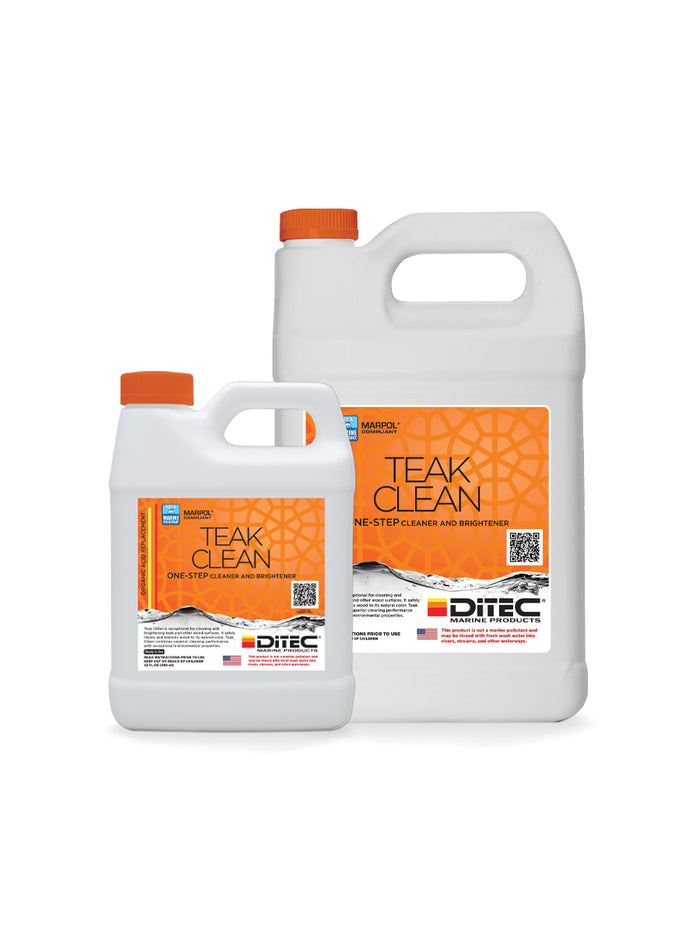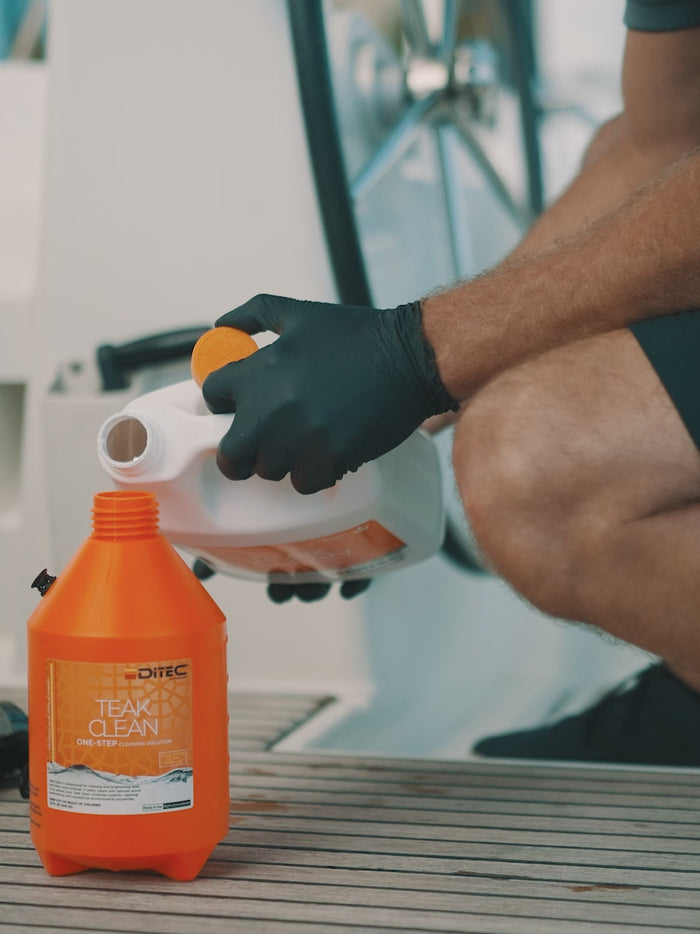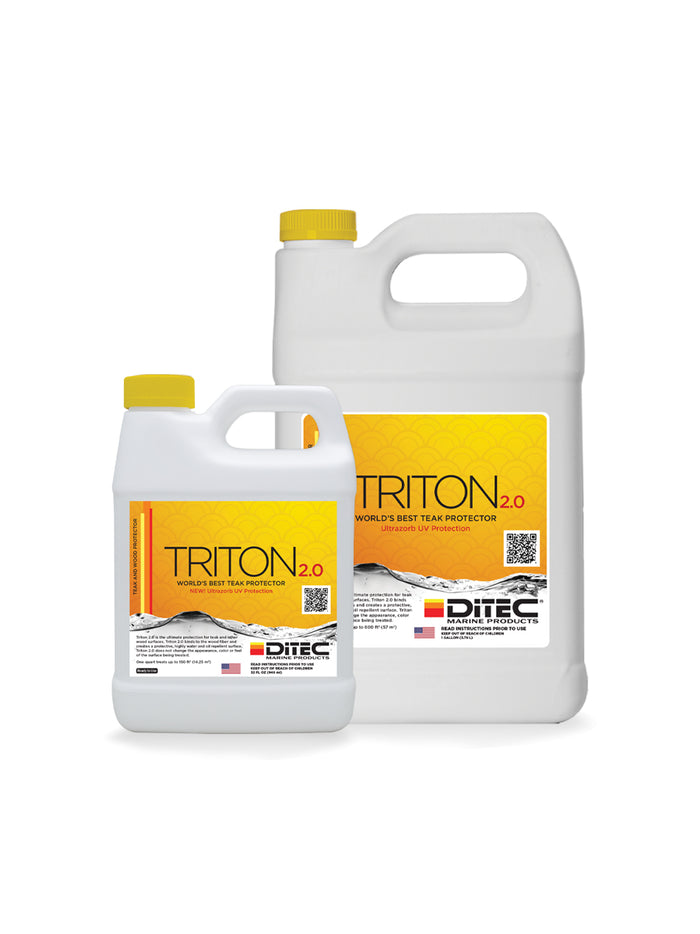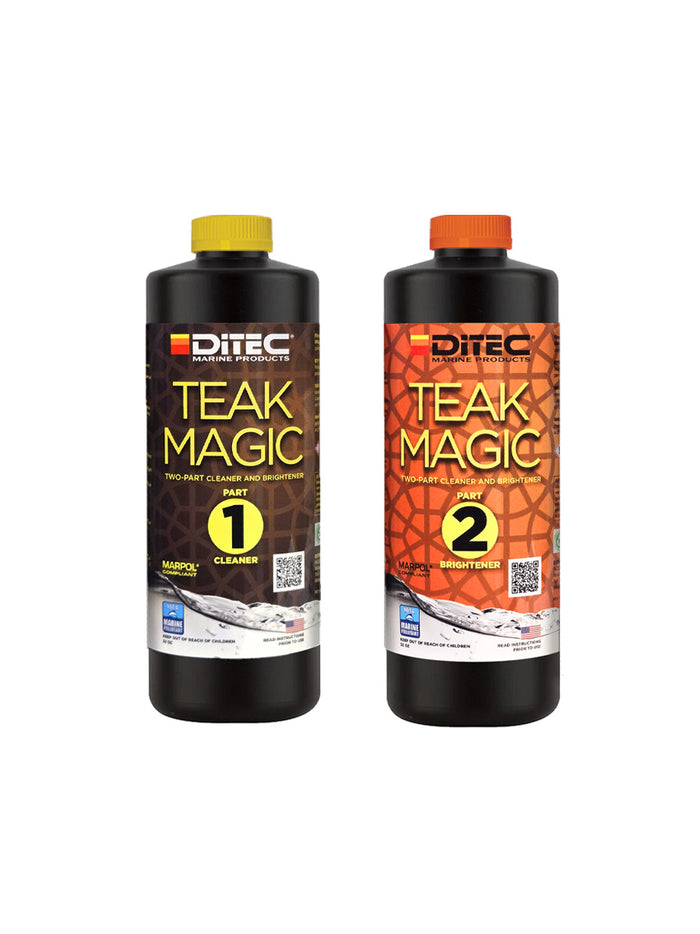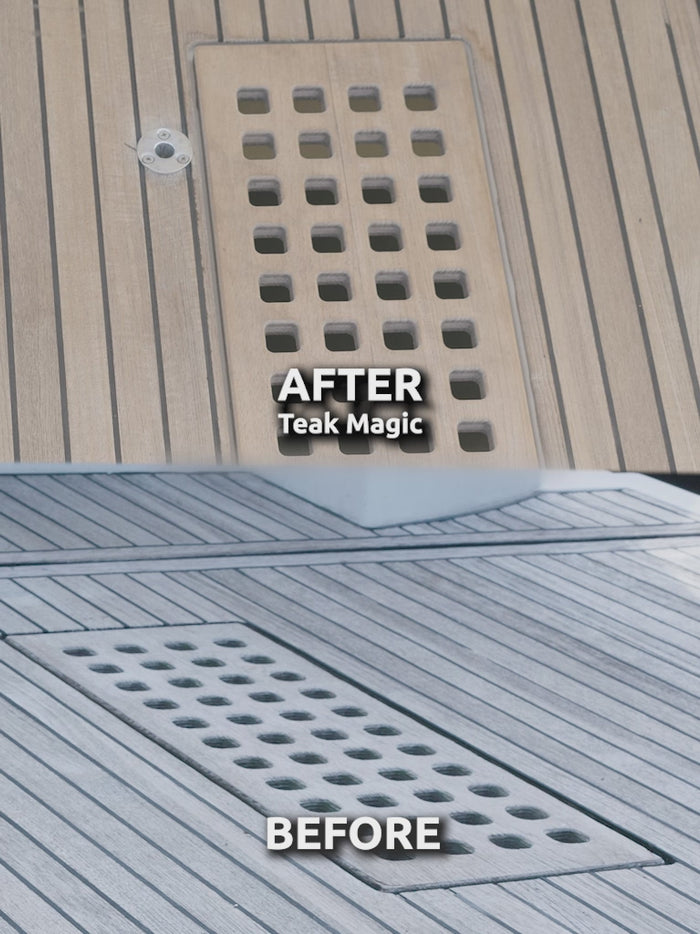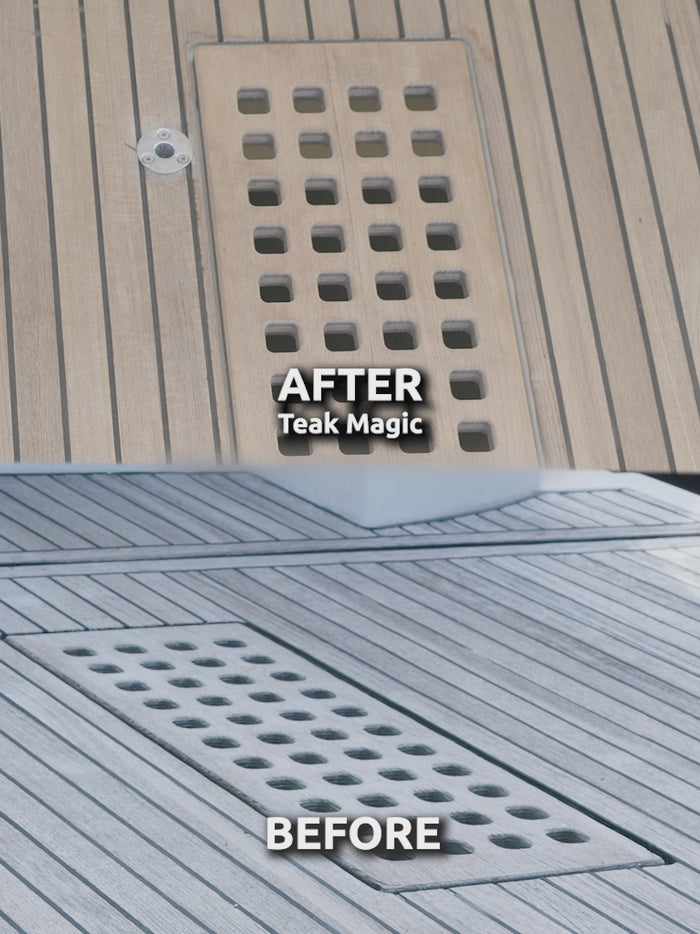Marine teak surfaces are cleaned in a very reactive and destructive manner. Teak becomes embedded with dirt and oily contaminants, grayed by the sun and salt, and contaminated with mold and mildew spores. In response to the cosmetically unattractive wood, yacht crews use highly corrosive 2-part cleaners, like Snappy Teak-Nu and Teak Plus -Teak Minus, to remove contaminants and brighten the surface.
The problem is that the strong hydroxide in part 1 of the 2-part process actually dissolves the wood, to reveal a refreshed but damaged surface, with deepened grain structure. As the grain structure deepens, the overall surface area of the deck increases exponentially. As a result, there is more surface area to hold dirt and oily contaminants, more surface to be damaged by the sun and salt, and more surface to hold moisture and develop mold and mildew. The cumulative effect is shorter and shorter intervals between necessary cleanings. Further, a teak deck can only withstand a limited number of corrosive cleanings, before too much wood has been dissolved and the grain structure is too deep.
At this point, the decks require sanding. This process also has a cumulative damaging effect, because sanding to a smooth, tight-grained finish requires removing even more wood. Ultimately, the teak maintenance programs used by yacht crews causes significant loss in deck thickness, premature deck failure, and results in the need to replace the deck.
There is also another downstream negative effect. The highly alkaline and acidic 2-part cleaners are also corrosive to paint and metal. When the rinse water from cleaning a deck flows overboard and runs down the painted surfaces, it scars the paint. Not only will the runoff, remove any protective paint sealant, but the damage also is cumulative, and thus shortens the service life of a yacht’s paint. It will also react with the metal surfaces, especially aluminum, causing scars and burns that require labor-intensive polishing to remove. Finally, the corrosive nature of existing teak cleaning products presents health and safety concerns for the deck crew.
Every aspect of current teak deck maintenance accelerates surface deterioration and increases the overall maintenance cost of the yacht… However, there is a solution!
Teak decks should be cleaned safely and proactively. Using DiTEC Marine Teak Clean, a deck crew can maintain the cosmetic appearance of the teak regularly, without causing corrosive damage to the wood and the surrounding paint and metal surfaces. DC-100 is a MARPOL Annex V compliant, salt-based organic acid replacement that does not have the same corrosive quality as phosphoric or hydrochloric acid.
How is this possible?
With acid replacement (AR) technology, the free protons that exist in phosphoric and hydrochloric acid do not exist. Free protons cause acids to react violently in the presence of oxygen and organic materials and metals and release their energy as heat and corrosion. With AR technology, DC-100 still is, highly acidic, but it lacks the negative corrosive quality of a traditional acid. This makes DC-100 three times stronger than phosphoric or hydrochloric acid when used as a cleaner.
Further, this change in chemistry allows for the successful introduction of metal corrosion inhibitors, surfactant/detergent, algaecide, and mildewstat to the DC-100 product. These additives enhance the cleaning process, removing dirt, oily contaminants, and oxidation AND THEY ELIMINATE the need for the strong hydroxide Part 1 of the traditional 2-Part cleaning process!
Teak Cleaner Application
For first use of Teak Clean, apply the product to a DRY deck, and scrub with the grain with a 3M medium blue Doodlebug pad. Allow the product to sit on the surface for up to 5 minutes, and then scrub one more time. Rinse with fresh water and make certain that all steel and aluminum is washed clean. If there are areas where the desired result is not achieved with the first cleaning, treat the areas topically. There is no need to re-clean
For ongoing maintenance, teak decks should be cleaned every three to four weeks with Teak Clean diluted 50% with fresh water. This process takes no longer than washing the decks with soap. It merely requires the use of a 3M soft white or medium blue Doodlebug pad, instead of a deck cleaning brush. When following a regular preventative teak deck maintenance program, sanding the decks will only be required to remove surface damage caused by accidents and normal wear and tear*. *Because DC-100 TEAK CLEAN is not highly corrosive, decks that are extremely gray and/or have deep grain structure will require sanding to achieve a level and clean surface. Once the deck is in serviceable condition, the maintenance method described above will be highly effective.




